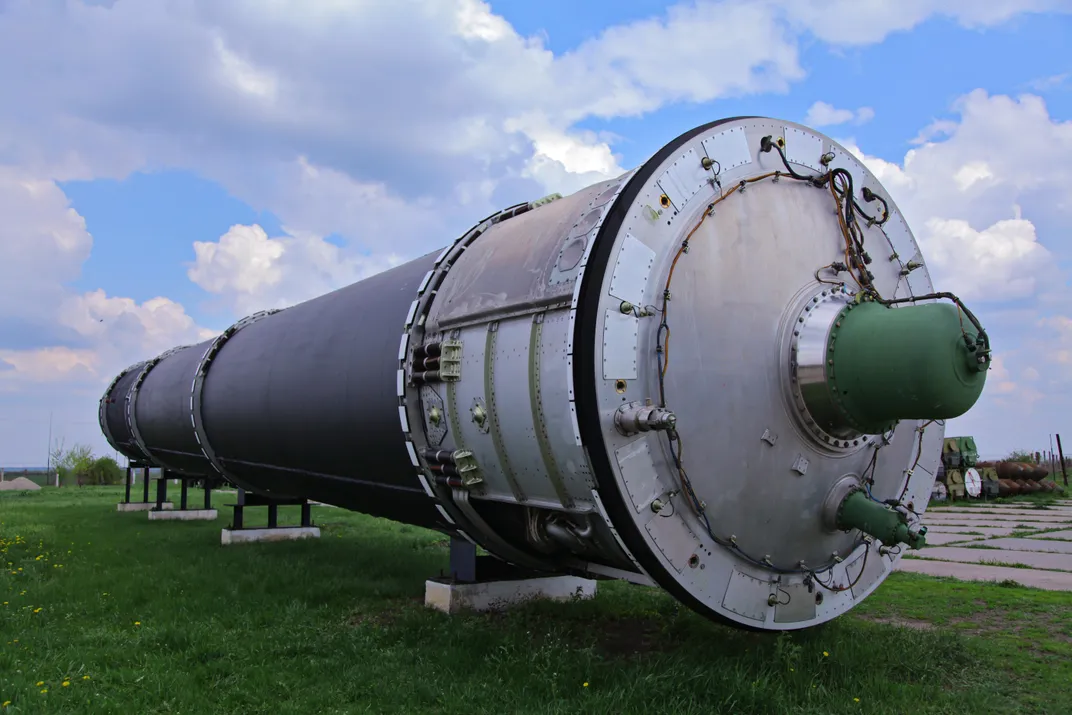Inside a Soviet ICBM Silo
A rare visit to a doomsday bunker.
/https://tf-cmsv2-smithsonianmag-media.s3.amazonaws.com/filer/de/e2/dee26a85-eaf6-4557-a9c4-5e6ee04e7f0a/18d_jj2018_img_2756_live.jpg)
The journey was long and treacherous, but the chance to see Satan was worth the trouble.
For years I’d heard of a unique rocket museum at a former Soviet missile base near the small town of Pervomaisky, Ukraine. A 2017 technical conference in the Ukrainian city of Dnipro was the perfect chance to visit what is officially called the Museum of Strategic Missile Forces, RVSN.
Opened only in 2001, after Ukraine gave up its nuclear weapons, the formerly top-secret base is located far from major cities. As the museum’s name implies, I would see hardware representing how much time, effort, and treasure human civilization has spent on the capability to destroy itself.
We departed Dnipro expecting a six-hour trip, but as we got farther from the city the road deteriorated. Other cars and trucks began moving in a zig-zag, preferring the risk of a head-on collision to the certainty of hitting giant, tire-flattening potholes. After nearly nine hours of vibration endurance testing, we reached our destination: a barbed-wire fence enclosing a vast section of the steppe.
The museum holds an impressively large and diverse collection of missiles, but I was there to see the crown jewel, at the far end of a tree-lined alley: The R-36M-2 Voevoda intercontinental ballistic missile, better known to NATO as the SS-18 Satan. The black-painted beast is still the largest missile ever deployed operationally, designed at the height of the cold war to carry 10 nuclear warheads. According to the Federation of American Scientists, the SS-18 frightened the Reagan administration so much that it made the missile the chief target of its arms control negotiations. Some of these armed missiles are still on alert in silos across Russia, ready to launch.

Coincidentally, SS-18s were developed and built in the town we had left that morning, Dnipro, but never stationed at Pervomaisky. Instead, the missile base hosted another ICBM built at Dnipro, the smaller RT-23 (SS‑24 Scalpel) ballistic missiles. Scalpels were designed to be launched from railway cars camouflaged as civilian freight trains, but their close cousins were deployed in underground silos, including the one in Pervomaisky. The museum hosts the only remaining Scalpel silo, preserved intact after a newly independent Ukraine agreed to give up its nuclear weapons in exchange for a guarantee of territorial integrity—which hasn’t worked out, but that’s another story.
The Scalpel silo burrows dozens of meters into the ground at the heart of the base, surrounded by more rows of barbed-wire fences and electronic alarms. An armed ICBM would be left alone at the site for up to three years, our guide told us, except for service personnel flown in by helicopters.
Now the silo’s protective cover lies permanently ajar, and along the access ramp are parked the giant rusting trucks once used to move missile stages, fuel, and nuclear warheads.
From one of the museum buildings, we descended into the silo access tunnel and took a tiny elevator to the firing room at the bottom (where, yes, you can press “the button”). I noticed a striking similarity to another bunker-museum I had toured in Arizona, where Titan 2 missiles were once aimed at the USSR.
It was dusk when we emerged from the doomsday bunker. Our iron-nerved driver committed to drive through the night, and we reached Dnipro at dawn. Two days later I left nuclear-free Ukraine for a world where nukes are still plentiful.
/https://tf-cmsv2-smithsonianmag-media.s3.amazonaws.com/accounts/headshot/AnatolyZak.jpg)

/https://tf-cmsv2-smithsonianmag-media.s3.amazonaws.com/accounts/headshot/AnatolyZak.jpg)